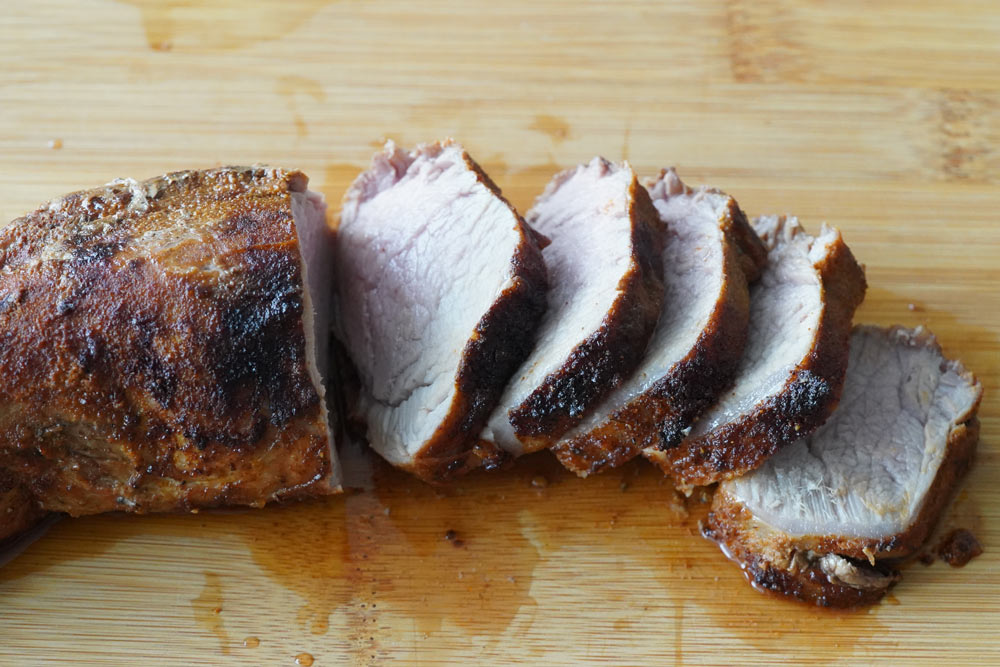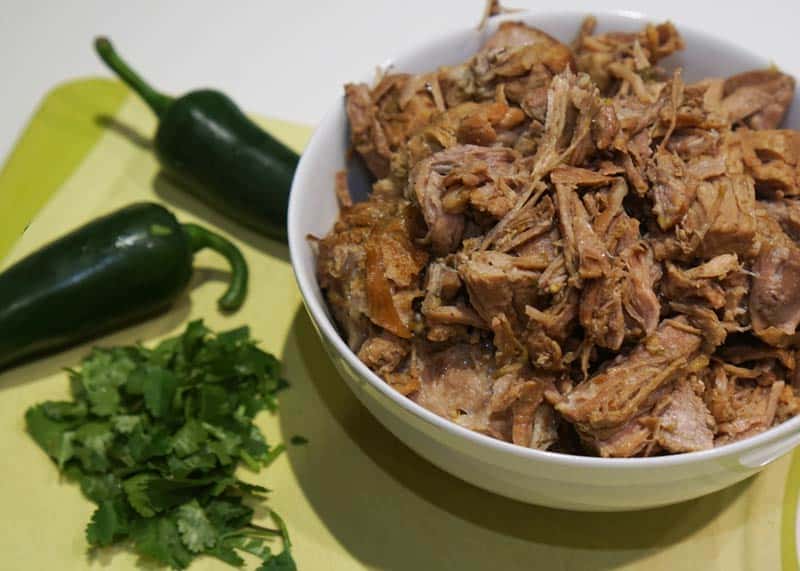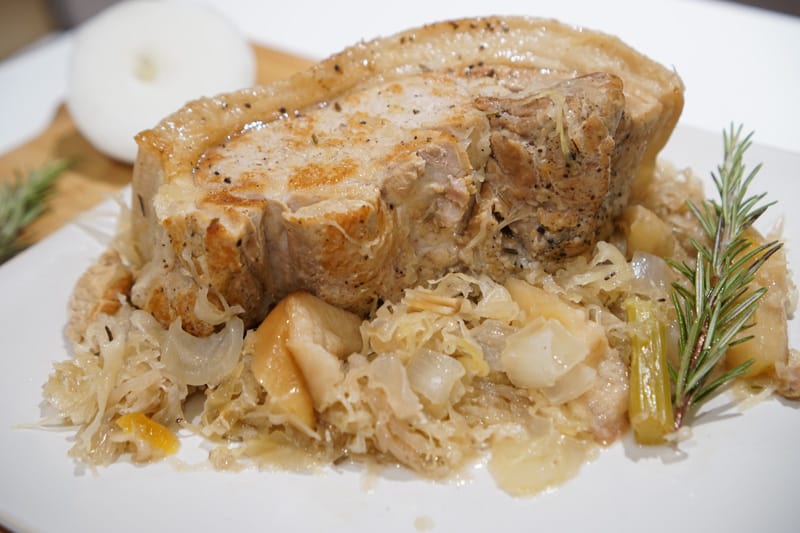In this article, I will focus on comparing two popular pork cuts: pork shoulder vs pork loin. Unless a recipe specifies which cut to use, you may be tempted to interchange these two cuts, based on what you can find at the store, but that doesn’t work quite as well as you might imagine.
» You might also like Flank Steak vs Skirt Steak: What’s the Difference?

That’s because, unlike pork shoulder and pork butt, which both come from the shoulder of the pig, pork shoulder and pork loin come from two different parts of the pig.
Keep reading to discover the difference between these two pork cuts, where to find them, and when to use them.
Pork Shoulder vs Pork Loin: Location on the Pig
Pork loin is cut from the back, just above the ribs, and has little fat or muscle, making it a particularly lean and tender cut.
Pork shoulder is cut from the pig’s narrower, triangular shoulder end above the front leg. This cut has some marbling and fat, making it less lean than pork loin.

Difference Between Pork Loin and Pork Shoulder
These are the most significant differences between pork shoulder and pork loin. The most notable are:
- Pork shoulder cuts are larger than pork loin.
- Pork loin has a consistent light color. Pork shoulder has a bright pink or dark red color.
- Pork loin is the leaner cut. Pork shoulder is also fairly lean but has some fat and marbling.
- Pork loin is flavorful, juicy, and tender when cooked properly. However, it can dry out if slow-cooked. Pork shoulder is best when slow-cooked.
- Pork loin is more expensive than pork shoulder.
Is Pork Shoulder the Same as Pork Loin?
Pork shoulder is not the same as pork loin. Pork shoulder is a tougher cut with more fat, while pork loin is the most tender and lean cut of pork.
Pork shoulder requires low slow cooking to make it tender, while pork loin should be cooked quickly at higher heats to retain it’s moisture and tenderness.

Can you Substitute Pork Loin for Pork Shoulder?
Pork loin and pork shoulder have different textures and flavors. Therefore, it’s generally not a good idea to swap them out in recipes.
Pork shoulder should be cooked slowly for the most tender and juicy results, while pork loin can be cooked much faster for optimal taste and texture.
For nice tender pork carnitas, you would want to use pork shoulder or butt because it will become fork tender when cooked long enough, and it will shred well to make perfect carnitas. If you used a pork loin for this, the meat would be dry and tough.

But to make a teriyaki pork tenderloin, for instance, you would want to use pork loin, because it will be cooked quickly at a higher temperature to retain the juiciness inside.
When to Use Pork Shoulder
Roasting or smoking pork shoulder is a fantastic way to maximize the flavor of this cut. This cut of pork is also best for slow-cooking methods, for example, a stew or braise. Cooking pork shoulder in the Instant Pot is another way to maximize on the fork tenderness of it.
Check out this Cuban mojo marinated pork recipe – one of my favorite ways to cook a pork shoulder. You an also make a great pulled pork with a shoulder. Read up on how many pounds of meat to serve each person when you are getting ready for your next BBQ.

When to Use Pork Loin
Pork loin is best used for grilling, pan-frying, or roasting. Another great way to use pork loin is in this instant pork and sauerkraut recipe. Pork loin can make a nice roast, because it holds together better than a shoulder would, which will shred much easier when cut into.
We use pork loin when we want to cook the meat quickly and slice it to serve with a side dish.

Which of These Two Pork Cuts is the Healthiest?
When comparing the nutrient content of pork loin with pork shoulder, pork loin is the healthier option, as it’s lower in calories, fat, and cholesterol.
YOU MIGHT ALSO LIKE
Like it, Love it, Want Some More of It? Subscribe to our YouTube channel to watch us cook and follow us on Pinterest, Instagram and Facebook. We really love it when you save our recipes to Pinterest 😊
Pin it for later!

Laura is a home cook, with 25 years experience behind the stove, who spends an extraordinary amount of time in the kitchen cooking. She loves making new recipes and finding wonderful new things to eat, both at home or abroad. She spends a lot of time researching, crafting, and perfecting her recipes.




